A simple exercise for getting your priorities straight: Forget about work and relationships
The TV Land sitcom Younger is a great show to watch when you’re in need of some light-hearted distraction. But as I recently discovered, it can also prompt a useful bit of soul-searching.


The TV Land sitcom Younger is a great show to watch when you’re in need of some light-hearted distraction. But as I recently discovered, it can also prompt a useful bit of soul-searching.
After watching an episode in which a Marie Kondo-like author named Kiko Kagami tries to help people clarify their priorities, I decided to adapt Kagami’s exercise for myself. First, I divided a piece of paper into four quadrants. Then I wrote down my top four priorities, one in each quadrant, hoping to discover something illuminating, as the TV characters had, about how to live my best life.
If you’re following along, go ahead and make one right now. Mine looked like this:
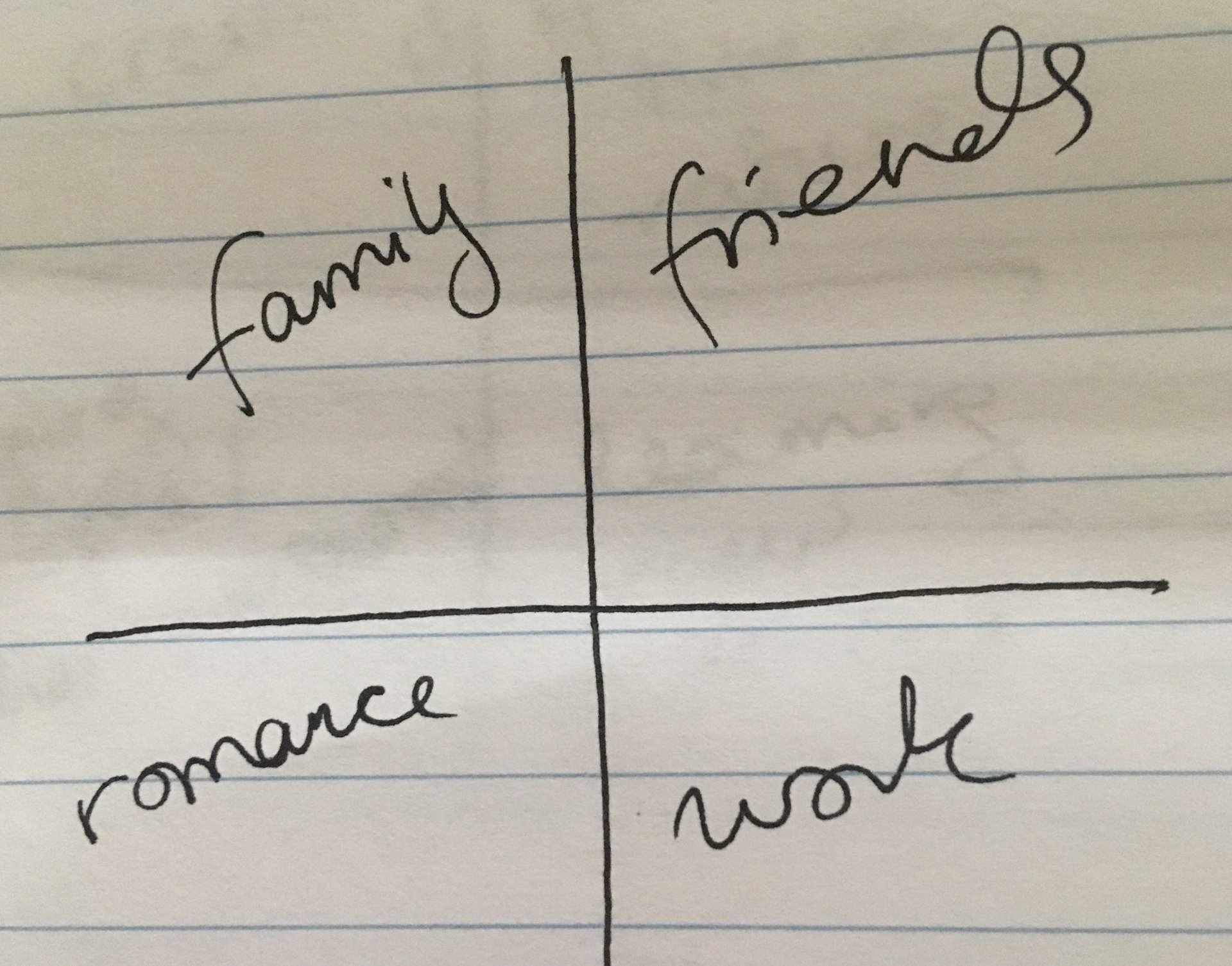
Huh, I thought. That actually wasn’t revealing or useful at all. I already knew that I cared about relationships and work. Writing those things down taught me exactly nothing.
The problem, I realized, was that if I wanted to glean insight about positive changes I could make in my life, I needed to take work and relationships off the table. The issue wasn’t that those things weren’t actually important to me; it was that they were far and away the most important to me. They loomed so large that I couldn’t see anything else.
But affirming that I care about people and my job didn’t tell me how I could strengthen my relationships or improve my work, nor did it shed light on what other steps I might take to create a happier, more useful life. To get my priorities straight, I needed a different perspective.
With that in mind, I decided to start over—no work or interpersonal relationships allowed. (If you’d like to try it, go ahead and follow this step, too.)
Here’s my second version:
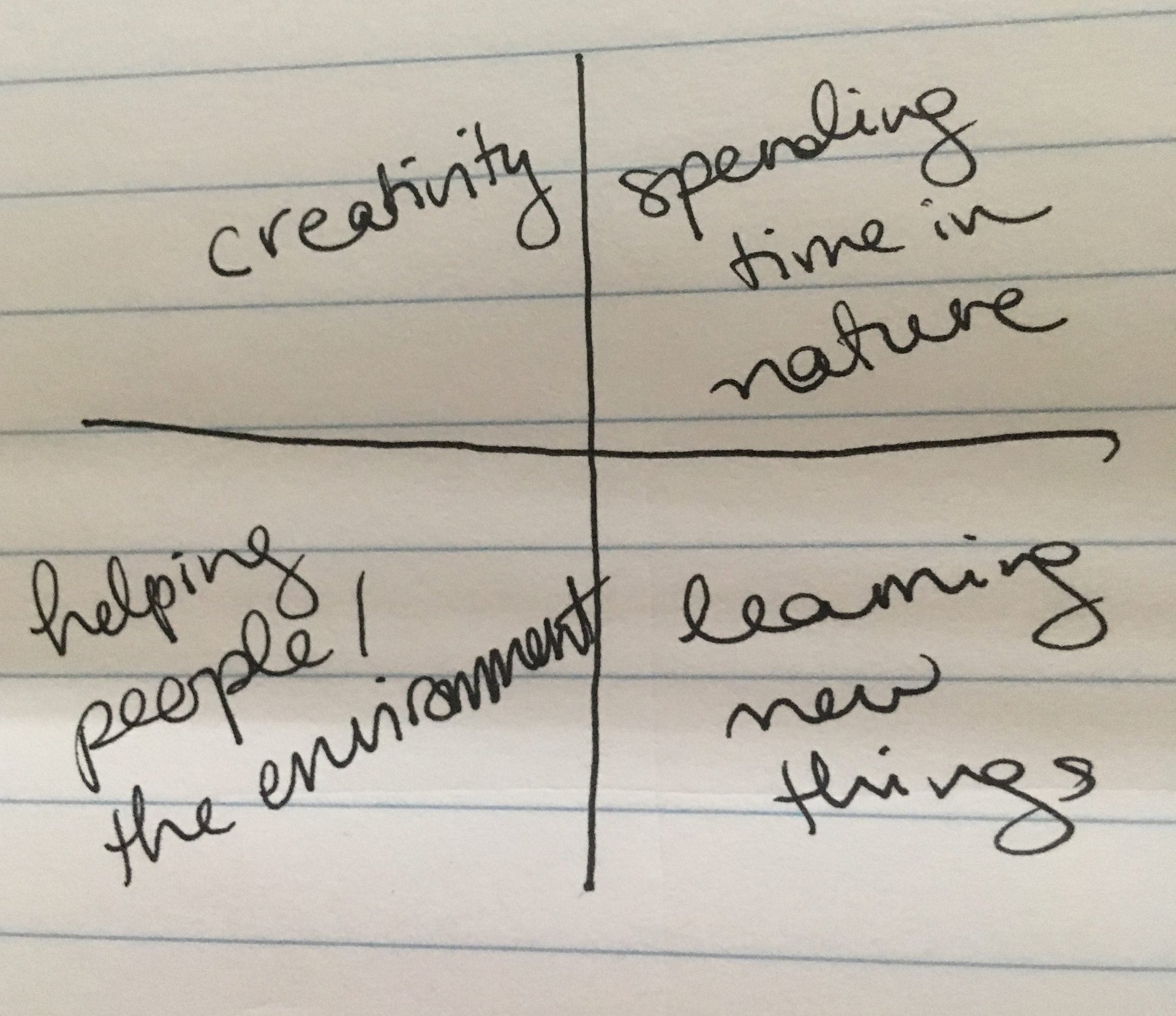
This was way better! Suddenly I could see possibilities for change. For example, creativity definitely brings me joy—so I really need to sign up for those art classes I’ve been thinking about, and challenge myself to take on inventive new projects at my job. Spending time in nature always makes me feel centered and happy. That means I should make it a priority to get out of the city on weekends, ideally with friends and family. My first chart was accurate, but it felt like more of a statement. Only the second version prompted genuine reflection.
Curious to see if this might hold true for other people, I decided to ask a few of my Quartz colleagues to complete the same exercise. In each case, first I asked them to draw a chart with their top four priorities, without giving any other guidance. After they’d completed it, I asked them to make one leaving work and interpersonal relationships out.
Here’s what my coworker Corinne’s first and second versions looked like. (Our handwriting looks eerily similar, but this really is a different person.)
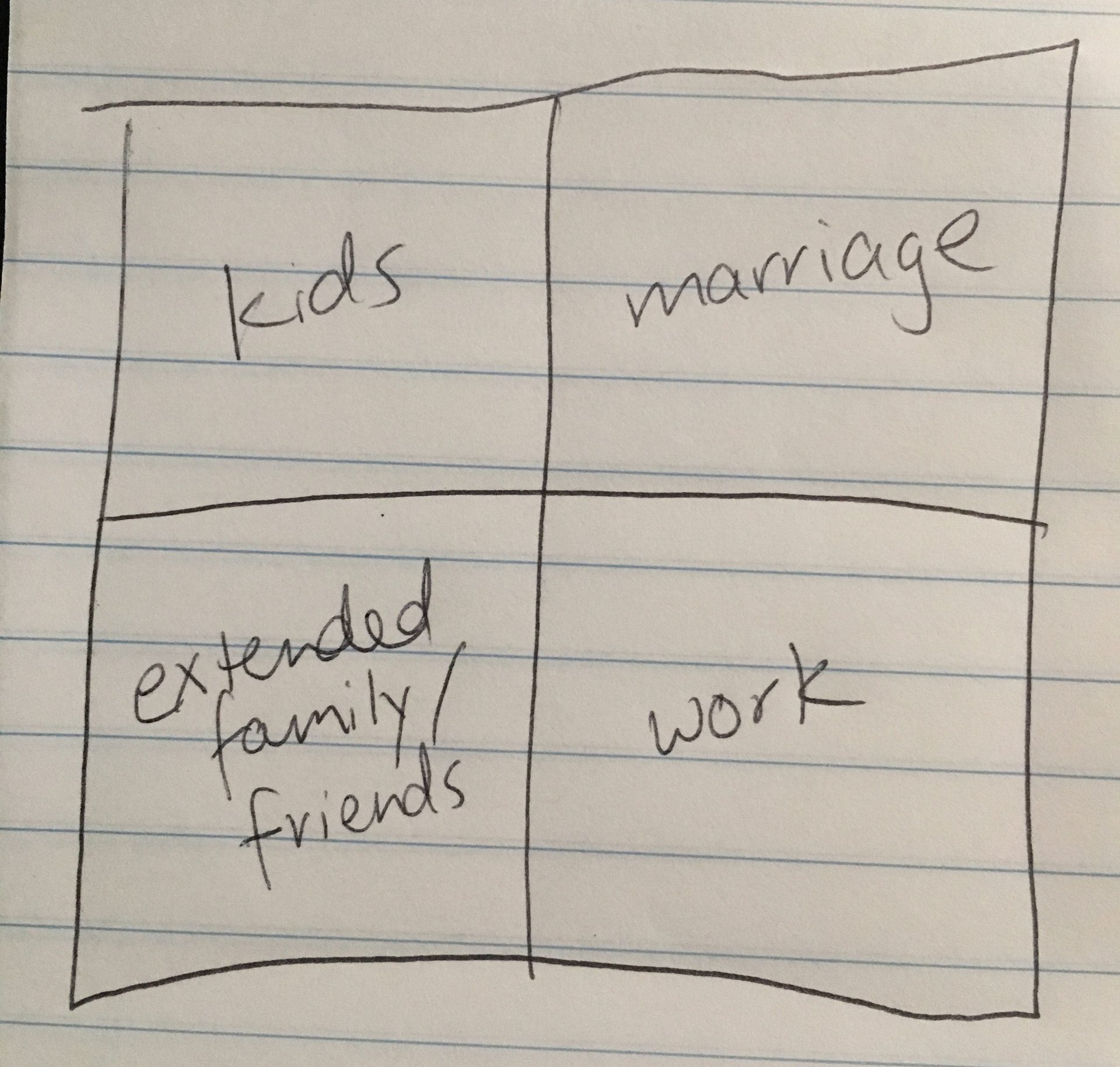
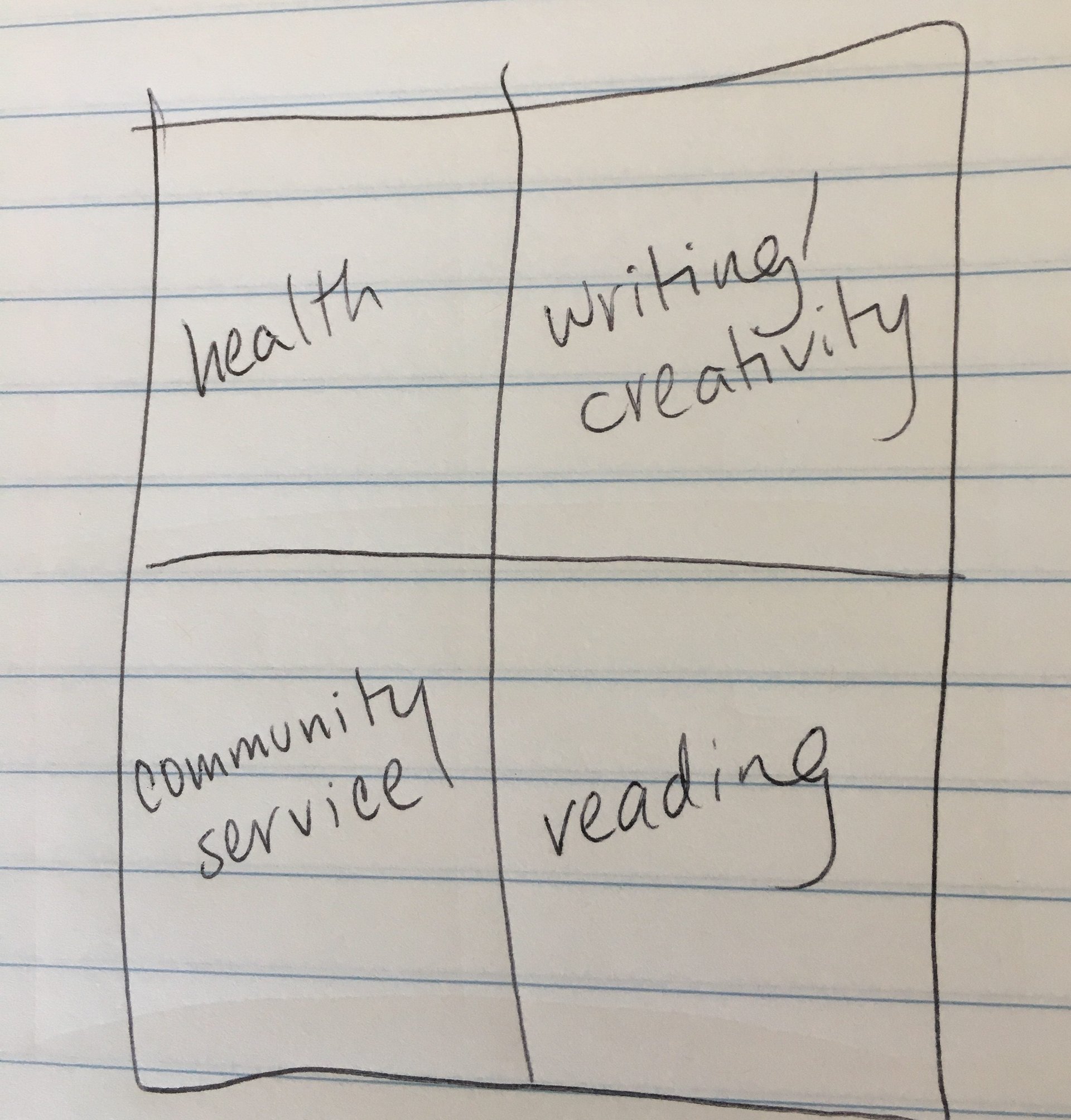
After Corinne had finished the exercise, I asked whether it had prompted any interesting reflections. “My life currently is a first square one,” she wrote. “I spend time exclusively on kids, marriage, work, and a small sliver of extended family. Yes, my life reflects the things that matter most. But I also feel drained and exhausted and unbalanced a great deal of the time.”
The second square, Corinne realized, contained the things she needed to prioritize in order to feel her best. “When I think about things that have brought me joy in, say, the last month, they are square two things—getting to go for a run, taking time to mentor or write something that isn’t for Quartz. Because square one stuff matters so much that you’ll just give and give without worrying so much about what you’re getting back. The square two priorities get second billing, but they are the stuff that nourishes you.”
Another Quartz colleague, Katherine, tried out the same exercise. Here are her first and second versions:
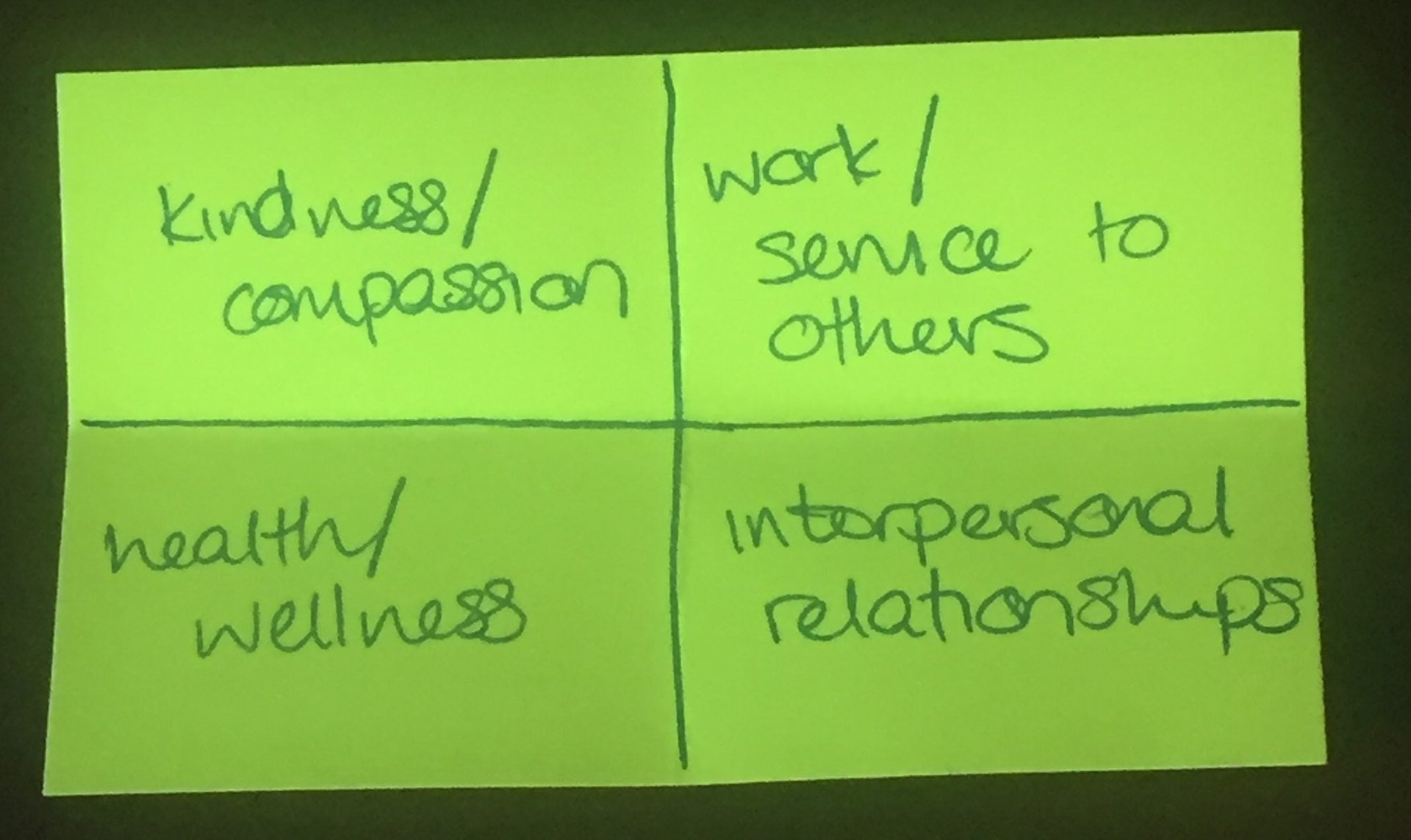
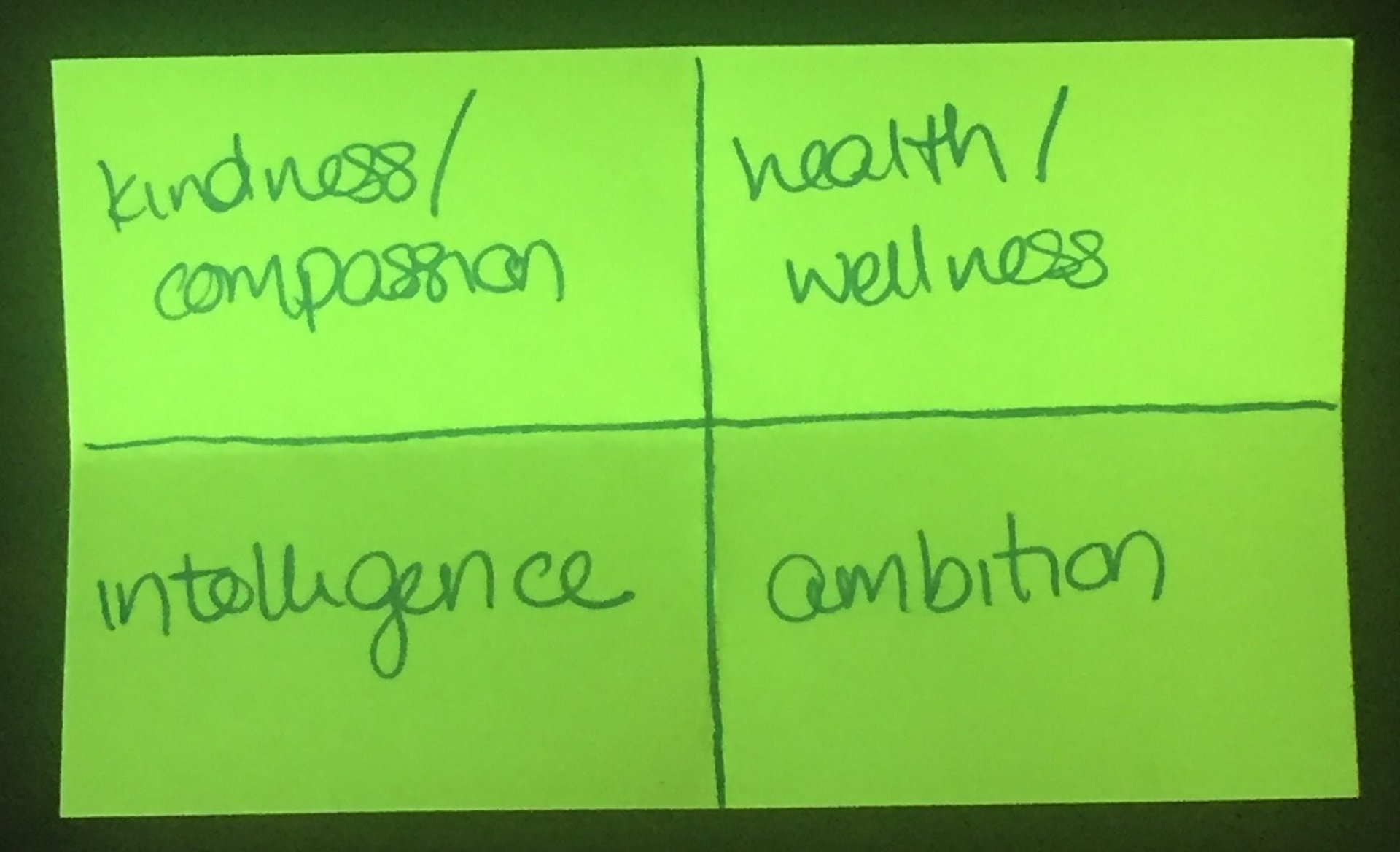
When Katherine looked at her two charts, she said, she realized how the second group of values could help inform the first. “I want to be someone who works hard and is ambitious at everything—not just my job,” she wrote. “I want to push myself to reach new health goals—even if that just means asking myself to think about health in a different way, like hitting a certain number of pushups for strength as opposed to trying to look a certain way.”
For everyone I spoke with, the exercise wound up provoking some sort of insight—sometimes simply acting as a reminder to take care of themselves. (One friend was a bit worried that “Staying sane and healthy” was the last thing she remembered to write down: “Maybe that’s not good.”) And putting work and relationships temporarily out of the picture didn’t make anyone decide to quit their job and live as a hermit in the woods. Instead, it just helped us get a little more clarity about what’s missing in our lives—and discover the things we can do to get our groove back.